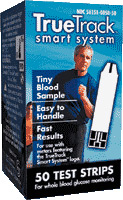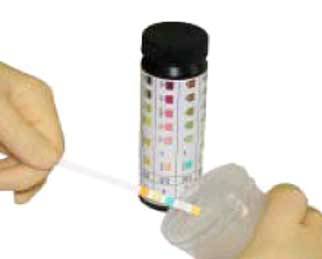Home » Home Health Care Products & Supplies » Understanding Type 2 Diabetes » Understanding Type 2 Diabetes
Understanding Type 2 Diabetes

TrueTrack Smart System Test Strips
Retail Price: $54.22
Your Price: $41.66
 Unit: 50/case
Unit: 50/case

Urine Reagent Test Strips for Glucose
Retail Price: $132.30
Your Price: $103.29
 Unit: 12/case
Unit: 12/case

OneTouch Ultra FastDraw Test Strips
Retail Price: $300.57
Your Price: $260.71
 Unit: 100/box
Unit: 100/box
Type 2 diabetes is the most common form of diabetes worldwide. The National Diabetes Information Clearinghouse (NDIC) reports that approximately 90 to 95 percent of all diagnosed cases of diabetes in adults over the age of 20 is Type 2. Type 2 diabetes is also referred to as non-insulin dependent diabetes since it can often be controlled by diet and exercise without the need for insulin on a regular basis. In older literature the term adult-onset diabetes is also used for Type 2, but this is misleading as it is increasingly diagnosed in teens and children.
Cause Of Type 2 Diabetes:
Type 2 diabetes if usually caused by a resistance to insulin, which is similar to a desensitization of the cells to the presence of normal insulin levels. Since the cells of the body are not releasing the chemicals that indicate their glucose requirements are filled, the pancreas is put under additional stress to produce above normal levels of insulin to satisfy the insulin-resistant cells. The pancreas eventually reaches its maximum output of insulin and, over time, the pancreas begins to shut down.
The specific reasons that the cells of the body develop a resistance to the normal levels of insulin is often a factor of genetics, environmental risk factors, ethnicity, diet and lifestyle.
Risk Factors:
Individuals may have one or more risk factors for developing Type 2 diabetes. While the more risk factors that are present the greater the chance of developing the disorder, the great news is that most of the risk factors can be changed. Individuals with the following risk factors should speak to their doctors and have routine blood glucose tests to check for prediabetes or Type 2 diabetes:
Family history of diabetes
- Gestational diabetes in women
- Obesity
- Over the age of 65 with symptoms of diabetes
- Low physical activity levels
- Hypertension or cardiovascular disease
- Belong to cultural or ethnic groups such as Native Americans, Hispanics, Africans, Asians or Pacific Islanders or Native Alaskan
Symptoms of Type 2 Diabetes:
Type 2 diabetes is often hidden since many people do not experience symptoms that are unique to the condition. Typical complaints include headaches, irritability, excessive thirst and urination, increased weight loss without dieting, fatigue, numbness or tingling in the hands and feet as well as dark patches on the skin and wounds that are slow to heal. Often these conditions are mistaken for other health factors including the normal aging process. The symptoms are often very slow to develop which can further increase the difficulty in diagnosis. Many patients fail to even mention the symptoms to their doctors, further delaying diagnosis.
Treatment Options:
The good news is that most individuals will be able to balance and manage their blood glucose levels without the need for insulin or to use tablet forms to regulate blood sugar. Typically a healthy diabetic diet that includes whole grains, smaller amounts of proteins and lots of healthy vegetables as well as a more active lifestyle is all that is required to control blood sugar.
Individuals with Type 2 diabetes do need to monitor their overall health and report any changes in their symptoms immediately to their physician. This will prevent or minimize the risks associated with the health issues common for individuals with Type 1 or Type 2 diabetes.














